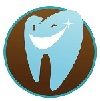
Understanding Periodontal Disease: Causes, Symptoms, and Treatments
Introduction
Periodontal disease, also known as gum disease, is a common oral health condition that affects the gums and supporting structures of the teeth. It is caused by bacteria in the mouth and can lead to serious complications if left untreated. This article will explore the causes, symptoms, and treatments of periodontal disease.
Causes of Periodontal Disease
Periodontal disease is primarily caused by the buildup of plaque, a sticky film of bacteria that forms on the teeth. When plaque is not removed through regular brushing and flossing, it hardens into tartar, which can only be removed by a dental professional. The bacteria in plaque and tartar produce toxins that irritate the gums, leading to inflammation and infection.
Poor Oral Hygiene
The most common cause of periodontal disease is poor oral hygiene. Not brushing and flossing regularly allows plaque to accumulate and harden into tartar, increasing the risk of gum disease.
Tobacco Use
Smoking and tobacco use are significant risk factors for periodontal disease. Tobacco reduces blood flow to the gums, making it harder for them to heal and fight off infection.
Genetics
Some individuals may be genetically predisposed to developing periodontal disease. If you have a family history of gum disease, you may be at a higher risk.
Hormonal Changes
Hormonal changes that occur during puberty, pregnancy, and menopause can make the gums more sensitive and prone to inflammation. This increases the risk of developing periodontal disease.
Symptoms of Periodontal Disease
Periodontal disease can range from mild gingivitis to more severe forms that can cause tooth loss. Recognizing the symptoms early on is crucial for prompt treatment.
Gum Inflammation
One of the first signs of periodontal disease is red, swollen, and tender gums. They may also bleed easily, especially during brushing or flossing.
Summary
Periodontal disease is a prevalent oral health condition characterized by inflammation and infection of the gums and supporting structures of the teeth. It is primarily caused by the accumulation of plaque, a sticky film of bacteria that forms on the teeth. Poor oral hygiene, smoking, hormonal changes, and certain medical conditions can increase the risk of developing periodontal disease. Common symptoms include red, swollen, and bleeding gums, persistent bad breath, receding gums, and loose teeth. Early detection and treatment are crucial to prevent further damage and complications. Treatment options include professional dental cleanings, scaling and root planing, antibiotics, and in severe cases, surgical intervention. Maintaining go check here od oral hygiene practices, regular dental check-ups, and a healthy lifestyle can help prevent periodontal disease and promote overall oral health.
- Q: What is periodontal disease?
- A: Periodontal disease, also known as gum disease, is an infection of the tissues that surround and support the teeth.
- Q: What causes periodontal disease?
- A: Periodontal disease is primarily caused by poor oral hygiene, which leads to the buildup of plaque and tartar on the teeth and gums. Other factors such as smoking, hormonal changes, and certain medications can also contribute to the development of the disease.
- Q: What are the symptoms of periodontal disease?
- A: Common symptoms of periodontal disease include swollen or bleeding gums, persistent bad breath, receding gums, loose teeth, and changes in the way your teeth fit together when you bite.
- Q: How is periodontal disease treated?
- A: Treatment for periodontal disease depends on the severity of the condition. It may include professional dental cleaning, scaling and root planing, medication, and in some cases, surgery. Maintaining good oral hygiene practices and regular dental check-ups are also crucial for managing the disease.
- Q: Can periodontal disease be prevented?
- A: Yes, periodontal disease can be prevented by practicing good oral hygiene. This includes brushing your teeth at least twice a day, flossing daily, using mouthwash, and visiting your dentist regularly for check-ups and cleanings.




